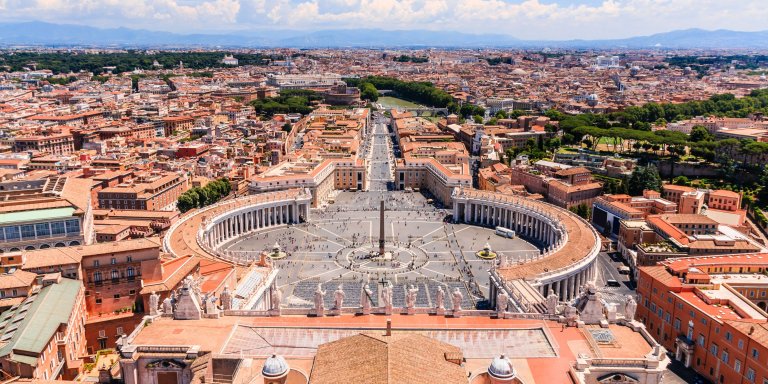

Are you ready to discover Rome’s most iconic landmarks and scenic views on foot? Lace up your most comfortable walking shoes because we have the perfect itinerary.
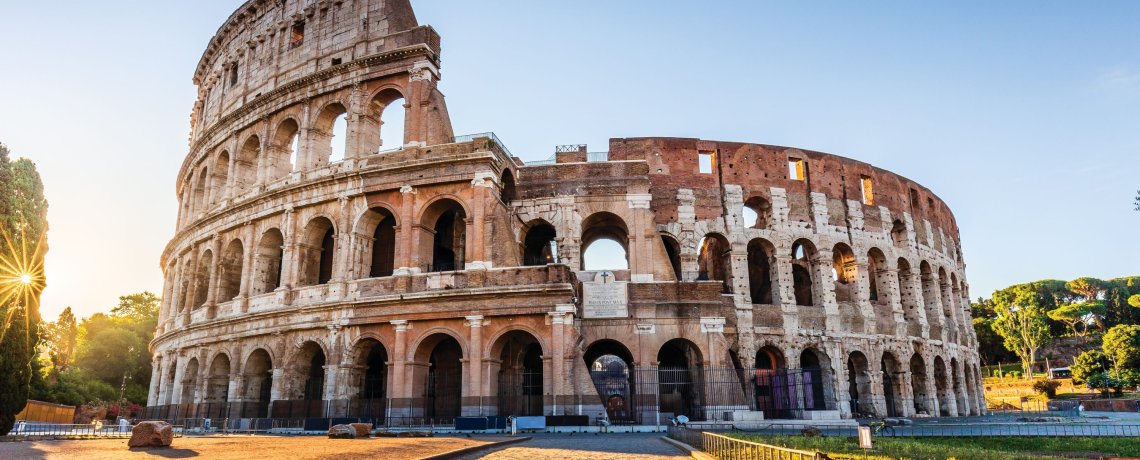
Explore some of Rome’s most famous attractions in a 2-hour walking tour through the capital city. We have created this itinerary so you can see the iconic landmarks of Rome such as the Colosseum, Trevi Fountain, the Vatican City, the Pantheon and more. The time spent is very much up to you.
Duration: 2 to 3 hours
Highlights: The Colosseum, Arch of Constantine, Palatine Hill, Basilica of Santa Maria, Roman Forum, Piazza Venezia and Victor Emmanuel II National Monument, Trevi Fountain, Pantheon, Piazza Navona, Campo di Fiori, Castel Sant’Angelo, the Vatican City
Our tour begins at the famous Roman amphitheatre, the Colosseum. This world treasure is famous for its architecture and history. Built between 70 and 72 AD, the grandeur of this amphitheatre will transport you back to the era of gladiator games.
Note: You will need a ticket to visit the Colosseum, we advise you to book at least one week in advance.
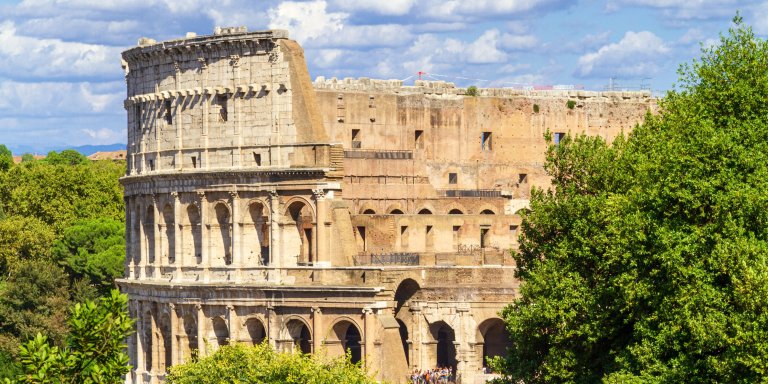
Next to the Colosseum is the Arch of Constantine, one of the best-preserved monuments from ancient Rome. This arch was built as a triumphal symbol by the Roman Emperor Constantine I, also known as Constantine the Great, in 315 AD. Two other triumphal arches can be seen in Rome: The Arch of Titus and the Arch of Severus.
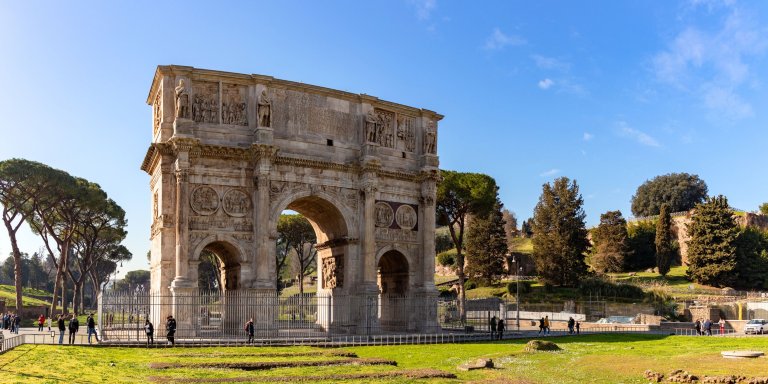
Head down Via di S. Gregorio and you’ll have Palatine Hill on your right. It is known as the location for Roman Emperors’ Imperial palaces and the location where Romulus founded the city. Its strategic position over the river Tiber and its height are most likely the reasons why Romulus chose this place to found the city. At the top of the hill, you can enjoy breathtaking views of the Roman Forum.
Note: You will need a ticket to visit the Palatine.

On your way to Basilica of Santa Maria Novella, you’ll pass “The Mouth of Truth”. The myth behind this ancient sculpture says that liars who placed their hand inside the sculpture would immediately lose it. Cross the River Tiber and continue your tour to the picturesque neighbourhood of Trastevere which is the location of the Basilica di Santa Maria, the largest of Rome’s 80 Marian churches. This church was built on the place where the Virgin Mary appeared in a dream of Pope Liberius.
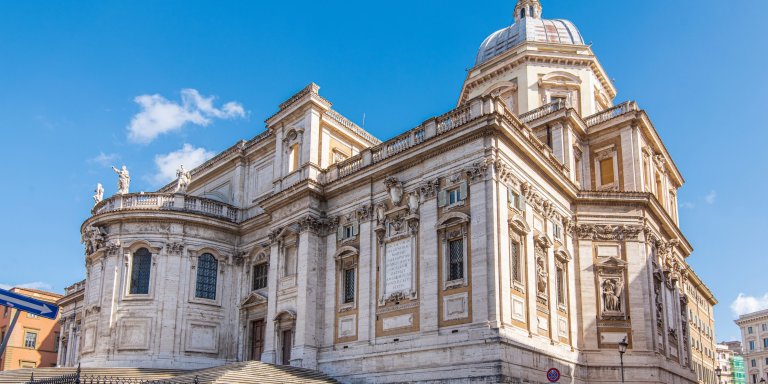
From the Basilica of Santa Maria, our walking tour takes us to the Roman Forum. Experience a unique feeling while exploring the ruins of temples, meeting halls and monuments in the heart of Ancient Rome. You can also see the gravesite of the infamous Julius Caesar.
Note: You will need a ticket to enter the site.
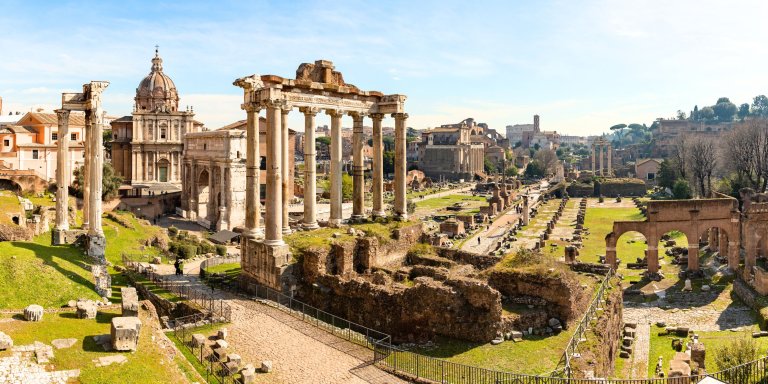
Continue to Piazza Venezia located at the foot of the Capitoline Hill and home to majestic monuments such as the National Museum of Palazzo Venezia and the National Institute of Archaeology and History of Art. Admire the giant white marble monument called the Victor Emmanuel II National Monument which is also known as the Altar of the Fatherland and nicknamed “the wedding cake” due to its white tiers.
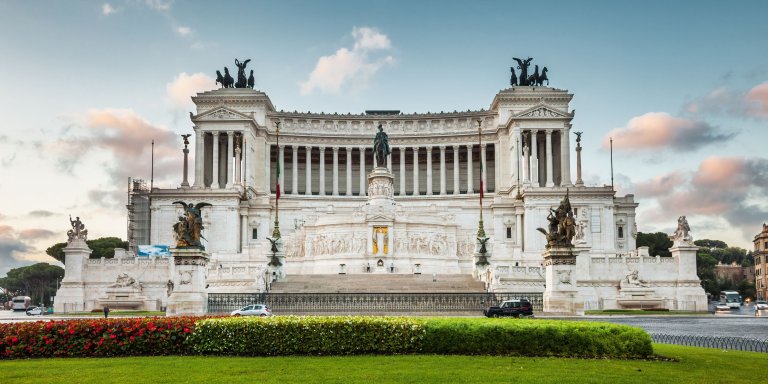
Our next stop on this tour is one of Rome’s oldest water sources, the Trevi Fountain. This emblematic monument dates back to Ancient Rome. According to legend, throwing a coin into the fountain will guarantee that you will return to Rome. But for this prophecy to come true, the person throwing the coin must stand with their back to the fountain and throw the coin over their left shoulder.

Next, we’ll explore the best-preserved monument of Ancient Rome which is the Pantheon. This temple is a true architectural marvel and was built as a monument dedicated to the gods. Over the years, the temple became the burial place of important kings and artists.
Note. You will need a ticket to visit the Pantheon, we advise you to book in advance.
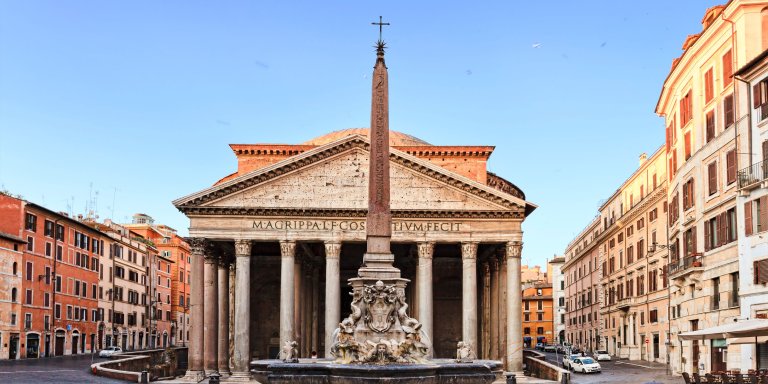
As we continue, we’ll pass through Piazza Navona, an open public space in Rome where you can admire Baroque architecture. One example of this type of architecture is the famous Fountain of the Four Rivers by Gian Lorenzo Bernini. The four statues are called the Nile, the Danube, the Ganges, and the Rio de la Plata; the four most important rivers in the continents where Christianity had spread.
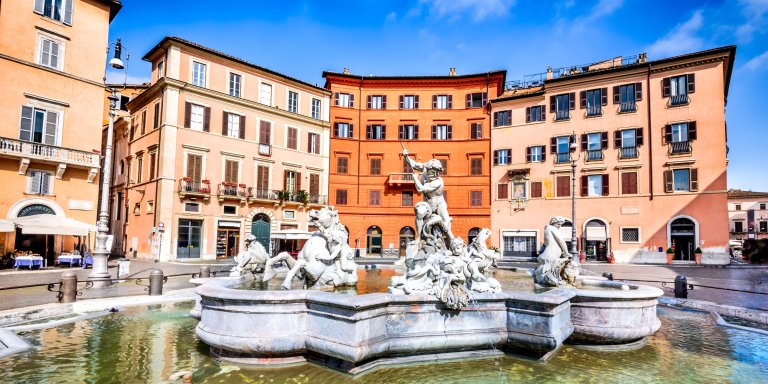
En route, you can stop off at the outdoor food market Campo de’ Fiori. Usually, open every morning except on Sundays, wander around the colourful stalls and grab something to eat or drink as the market offers plenty of choices of street food, fruit juices and other local goods. If not hungry, you can admire the beauty the Italian land provides.
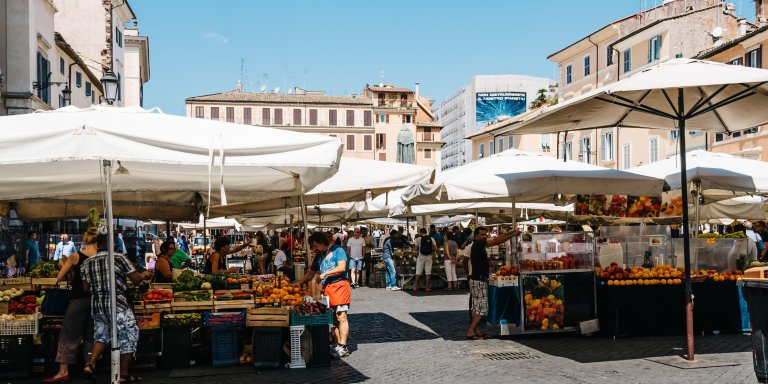
Known for its cultural and historical value, the fortress of Castel Sant Angelo is our next stop on this tour. This two-century-old Castle was built as a mausoleum and was associated with the archangel Michael in the year 590, after its appearance in a dream of Pope Gregory I. A statue of the archangel now stands atop “the Castle of the Holy Angel”. This fortress is one of the city’s historic gems and well worth a visit if time allows.
Note: You will need a ticket to visit the castle.
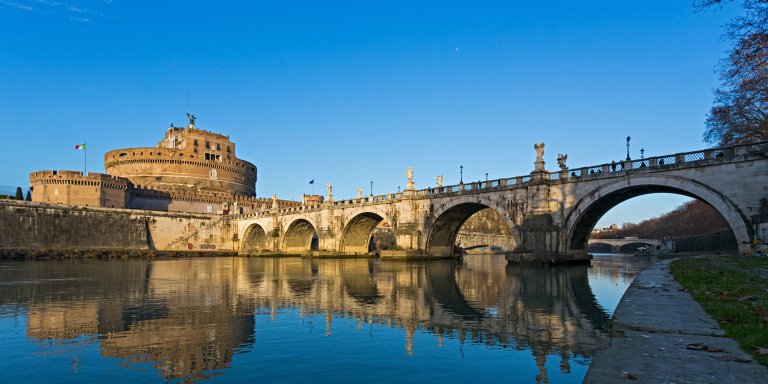
Our tour ends with a visit to the smallest country in the world, the Vatican City. Located within Rome’s historic centre, it is the holiest place in Christendom and the residence of the Pope. There are many interesting places to visit, the most famous are St.Peter’s Square, St.Peter’s Basilica and the Sistine Chapel. We recommend that you prebook a guided tour to get the most out of a visit to the Vatican.
